
Recently Tamron India sent me Tamron 28-200 F/2.8-5.6 Di III RXD for Sony Mirrorless Cameras for review. This is a unique lens being an all-in-one zoom range and a fast design, distinguished by its bright f/2.8 maximum aperture at the wide end of the zoom, along with its sleek and portable design. I tested this lens with my Sony Alpha A7RIV camera.

Let’s look at some salient features of this lens.

- All-in-one zoom is designed for full-frame Sony E-mount mirrorless cameras, however can also be used with APS-C models where it will provide a 42-300mm equivalent focal length range.
- Bright f/2.8-5.6 maximum aperture range suits working in available lighting conditions, especially when working at the wide-angle end of the expansive zoom range.
- A series of specialized elements control a variety of aberrations in order to achieve high sharpness and clarity.
- RXD (Rapid eXtra-silent stepping Drive) autofocus motor delivers impressively quiet, quick, and smooth focusing performance to suit both stills and video applications.
- This focusing system also offers a minimum focusing distance of just 19cm and a 1:3.1 maximum magnification for working with close-up subjects.
- Full-time manual focus override is also possible, and it is compatible with Sony’s Direct Manual Focus function or fine-tuned manual control.
- A moisture-resistant construction benefits this lens’ use in inclement conditions, and a fluorine coating has also been applied to the front lens element to protect against dust, dirt, and smearing.
- Rounded seven-blade diaphragm contributes to quite a pleasing bokeh quality.
- Zoom Lock switch keeps the lens in its retracted position when not in use.

Tamron 28-200 F/2.8-5.6 Di III RXD is definitely a great travel lens. Since there are quite a lot of reviews out there on the internet about this lens which all praise this first superzoom which has an f/2.8 aperture for a full-frame camera, I wanted to check how it really works as a travel lens. So instead of a dry technical review I actually took this camera in the field to shoot a travel destination and tried to capture images just like any tourist will do.
So, I headed out to two famous tourists as well as archaeological wonders of my state – Hoysala period temples. The first destination was Belur Chennakeshava Temple.

This magnificent temple of Chennakeshava is dedicated to Lord Vijayanarayana, one of the twenty-four incarnations of Vishnu. King Vishnuvardhana had built the temple to commemorate the victory of the Hoysalas over the Cholas in the battle of Talakkad. By liberating himself from their political authority, he also wanted to excel them in their own field. The result was the remarkable temple which certainly overshadowed the Chalukyan achievements in the field of arts.
During the Hoysala reign of 300 years, a baffling 1500 temples were built in 958 locations out of which only 100 survive today. Belur Chennakeshava is probably one of the best examples.

The construction of the visually stunning Chennakeshava temple was commenced in 1116 A.D., furthered by his son Narasimha Raya and later on completed by his grandson- Veera Ballala. It took 103 years to complete this spectacularly sculptured temple. The temple is about 100 feet high and has a magnificent threshold or Gopuram. Its inner walls are adorned with sculptured stories from the Puranas, the Upanishads and the epics of Ramayana and Mahabharata.
Belur is the first temple built after the Hoysalas became an independent dynasty. The artistic vocabulary is still Chalukyan because the artists are Chalukyan. The walls are still not over-decorated, which changed in later temples. Since the Hoysalas wanted to better the Chalukyas they did this in different ways. Over-decoration may be the result of this.
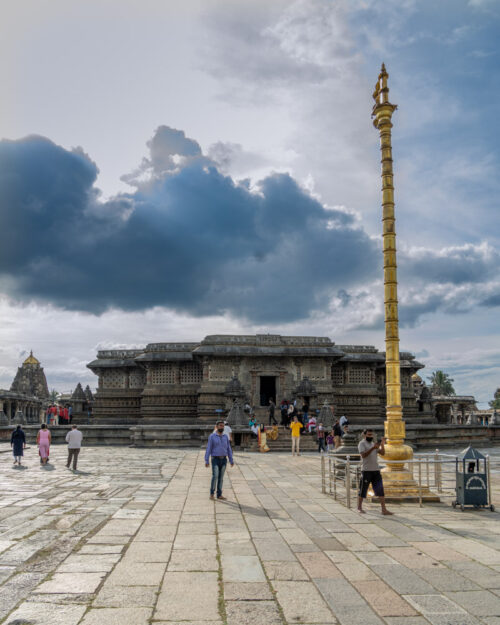
Since this is a review of the lens, let us see how the lens coped with our regular tourist’s way of capturing the image in the temple complex.

The temple is adorned by salabhanjika’s also known as madanika’s on the capitals of the supporting pillars. There were originally 40, of which 38 have survived in damaged or good form. Without a zoom lens, it is difficult to capture them at such a closeup.


The zoom capability of the lens comes really handy. With variable zoom, you can precisely crop the images right while shooting rather than in post-processing.


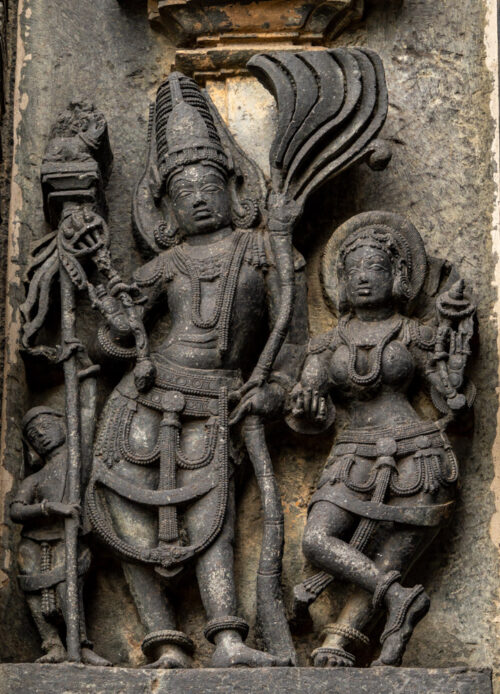
Going a little away from the subject and using the telephoto angle of the lens allows you to avoid perspective distortion. It also makes the subject more proportionate looking than a wide-angle closeup capture does. This is where the images captured by Mobile phones differ ; ). Tamron 28-200 F/2.8-5.6 Di III RXD excels in that aspect.
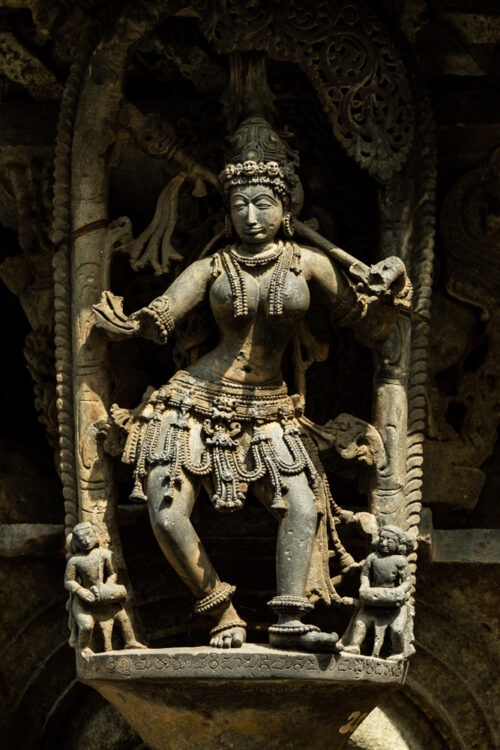
The Tamron 28-200 F/2.8-5.6 Di III RXD zoom is great. It starts at 28mm and f2.8 and ends at 200mm f5.6 which is quite impressive. In fact, it’s the first all-in-one zoom in the world that starts at f2.8 and that is pretty cool.


In the past, “all in one zoom” were always a compromise on quality. Most of the time widest started at f4 or more, or where the image quality had deteriorated. If you were looking for extremely good quality in these zooms, then they also cost a fortune. Canon’s legendary EF 35–350mm f/3.5–5.6L USM was one such huge zoom but was extremely expensive. The Tamron 28-200mm f2.8-5.6 for Sony E-mount costs just around Rs. 60,000, which I think is very reasonable, seeing the quality you get for that price.


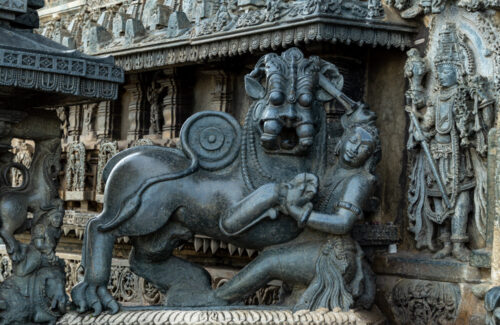
The folklore tells a tale of a young man, Sala, who saved his Jain guru, Sudatta, by striking dead a tiger he encountered near the temple of the goddess Vasantika at Angadi, now called Sosevuru. The word “strike” literally translates to “hoy” in Old Kannada, hence the name “Hoy-sala”. This legend first appeared in the Belur inscription of Vishnuvardhana (1117), but owing to several inconsistencies in the Sala story it remains in the realm of folklore. The legend may have come into existence or gained popularity after King Vishnuvardhana’s victory over the Cholas at Talakadu as the Hoysala emblem depicts the fight between the mythical warrior Sala and a tiger, the tiger being the emblem of the Cholas.


The two images above are the intricately detailed Salabhanjika’s we find inside the inner sanctum of Chennakeshava temple. The light here is very low. The halogen lamps used inside are dimmed considerably but give a funny colour cast. To avoid that I have converted it to Monochrome. High ISO was easily avoided as I was using ISO 640 with f/5.6. Many long zooms are not so sharp at their base aperture (f/5.6 is the base aperture at the tele end of this lens). Tamron 28-200 F/2.8-5.6 Di III RXD excels even at wide-open aperture throughout its zoom range.

The next temple we visited was the Veera Narayana temple is located in Belavadi. Belavadi is a short distance from Belur and Halebidu. This ornate trikuta (three shrined) temple was built in 1200 C.E. by Hoysala Empire King Veera Ballala II. The material used is Soapstone. Each of the three shrines has a complete superstructure (the tower on top of the shrine) and is one of the largest temples built by the Hoysala kings. While the temples at Belur was known for their intricate sculptures, this temple is known for their architecture.

The plan of the temple is unique in that two of the shrines face each other and are located on either side of a wide and spacious open mantapa (hall) containing thirty-seven bays. The temple complex has two closed mantapas, one with thirteen bays and another with nine bays, at the end of which is a central shrine. This third shrine is an older construction and exhibits a standard architectural idiom containing all the basic elements of a Hoysala temple. The inner walls of the older shrine are plain, but its roof is well decorated. In all, the temple complex has fifty-nine bays (hence it has many pillars), most of which are lathe-turned and bell-shaped, while a few have decorative carvings on them.

Domical bay ceiling art in outer mantapa of the Veeranarayana temple at Belavadi.
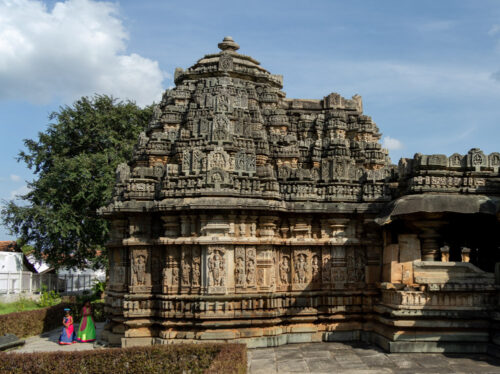
Tamron 28-200 F/2.8-5.6 Di III RXD lens has a very high optical quality both in wide shots at 28mm, and also on the Tele end 200mm. Its lightweight design that’s a mere 11.7cm long and weighs just 575g is a breeze to carry it all day long.

One other thing which I appreciate from the Tamron line up is their filter thread. The 67mm filter size is the same as other lenses in Tamron’s mirrorless lens line-up. This means that the filters such as Polarizer Filter, ND filter and lens caps can be used for all models in the series, for greater convenience and less hassle during lens changes.

Tamron 28-200mm F/2.8-5.6 Di III RXD does not have Tamron’s Vibration Compensation (VC) image stabilizer built into the lens. It allows the Tamron zooms to be smaller, lighter and cheaper by making use of Sony’s in-body image stabilization in its full-frame mirrorless cameras to keep things stable. I generally find that lenses with built-in stabilization perform better than relying on in-camera stabilization, but the Sony a7RIV system did a fairly decent job of counteracting handshake with this lens, even when zoomed to 200mm.
Tamron 28-200mm f2.8-5.6 supports both Sony’s Eye-AF and DMF (Direct Manual Focus) It also has a “Lock button” that allows you to lock the zoom at 28mm when you have it in a strap over your shoulder. This button also comes from the Tamron 70-180mm f2.8.The lens has the same black-grey finish with black rubber as zoom and focuses ring as other newer generation Tamron lens.

The capture above is a panorama stitched using 7 vertical images at 28mm focal length and combined in Adobe Lightroom Classic. Since lens distortion was very minimal I could achieve a perfect panorama without any difficulty.

Returning from these temple visits, via Charmadi route I saw this Malabar Giant Squirrel feeding on tender cinnamon leaves. I shot this using 200mm zoom and since I was using a Sony A7RIV body I was able to crop it almost by 50% without losing quality. You can notice a slightly doughnut-shaped bokeh (background blur) which is present both in wide shots at 28mm and also on the Tele end 200mm.





It has a Minimum focusing Distance of 19cm at the wide end with a maximum magnification ratio of 1:3.1, and at the 200mm telephoto end it has a Minimum focusing Distance of 80cm with a maximum magnification ratio of 1:3.8. In addition to capturing stunning close-up images, you can leverage the blurred background bokeh utilizing a large F-number and enjoy unique close-up shots that were not possible with all-in-one zoom lenses until now.

Tamron has opted for an RXD motor for the 28-200mm F2.8-5.6 Di III RXD which is what they have in the 28-75 mm F2.8 Di III RXD and the 17-28 mm F2.8 Di III RXD lenses. It is not as fast as the VXD motor found in the new 70-180mm F2.8 Di III VXD, but a lot better than the OSD motors that the fixed focal points have. The RXD motors are accurate and quiet. This Rapid eXtra-silent stepping Drive (RXD) motor handles focusing. As with the other recent Tamron zoom lenses, it works excellently for both static and moving subjects.
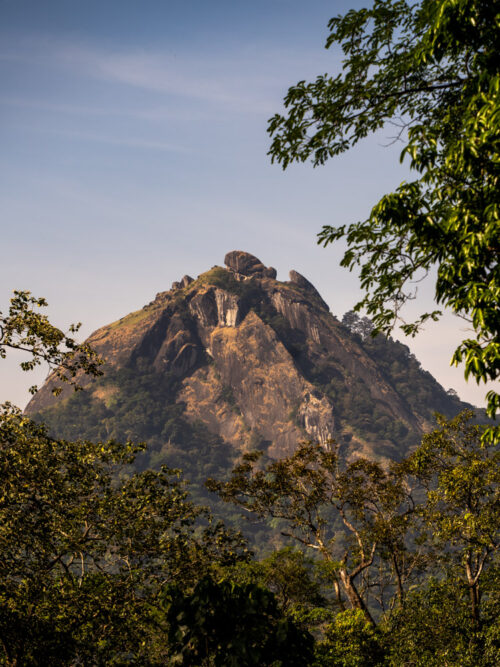
Sony’s Eye AF also works smoothly with this lens. At the largest aperture and wide-angle, the sharpness is excellent in the centre of the image but gradually decreases towards the edges.

At F5.6 and lower, the sharpness over the entire image is very good. As you zoom in, the sharpness is also very good at the edges.
The built-in lens corrections on my Sony A7RIV removes the slight barrel-shaped distortion at 28mm and the pincushion-shaped distortion in the telephoto range. Vignetting is still visible at the largest apertures even with the lens corrections switched on.

The image above is an HDR image created by combining 3 separate exposure one 1-stop underexposed and one 1-stop overexposed with a normal exposed in Adobe Lightroom Classic
The only competition I see for this lens is Sony 24-240mm f/3.5-6.3 (https://amzn.to/2PptOcL) which slightly expensive (Rs 80,000) and it gives you more range than the Tamron, but at the expense of a slower aperture. It is also larger and heavier, at 780gm, making it less suitable for travelling & hiking. It also does not have f/2.8 at its widest.
The Tamron 28-200mm f/2.8-5.6 is not trying to be the one lens to rule them all. It’s the lens you pack into your carry-on for an international flight (when that’s allowed again). Tamron 28-200mm f 2.8-5.6 RXD III brings some new things to the all-in-one lens series. The f2.8 aperture, great variable focal length and the ability to focus very close to the subject at the wide end, all in a very compact volume, without sacrificing any image quality despite the large focal range. The price being more than decent, it will surely find its place in the kits of amateur and professional photographers.
If you want a flexible walk-around lens for a Sony mirrorless camera, the Tamron 28-200mm is perfect, especially when you need a portable, one-lens solution for any casual photography environment.


ಈ ಕ್ಯಾಮರಾ ಪಾಠಗಳು ಹೆಚ್ಚಾಗಿ ನನ್ನ ತುತ್ತಲ್ಲಾಂತ ನಾನು ಹಾರಿಸುವವ. ಈಗ FBಯಿಂದ ನೀವೇ ನೂಕಿದ್ದಕ್ಕೆ ೧. ಸಮ ಎತ್ತರಕ್ಕೆ ಬರುವ ಸೌಕರ್ಯ ಕುಶಿಯಾಯ್ತು. ೨. ನೀವು ಬಾಳೆಕಲ್ಲು ಎಂದು ಕೊಟ್ಟ ಚಿತ್ರ ಏರಿಕಲ್ಲು. ಕೊಡೆಕಲ್ಲಿನಿಂದ ಸ್ವಲ್ಪ ಆಚೆ ಬಾಳೆಕಲ್ಲು ಮತ್ತಿದರ ಶಿಖರವಲಯ ಅಂಥಾ ಕಲ್ಲುಗಳದ್ದೇನಲ್ಲ ೩. ವೀರಬಲ್ಲಾಳ III ಮೈಸೂರಿನ ಸಮೀಪ ಕೆ.ಹೆಮ್ಮನಹಳ್ಳಿಯಲ್ಲಿ ಕಟ್ಟಿಸಿದ್ದ ದೇವಸ್ಥಾನವನ್ನು ಪೂರ್ತಿ ಶಿಥಿಲಾವಸ್ಥೆಯಿಂದ ಪುನಾರಚಿಸಿದ ಖ್ಯಾತಿ ನನ್ನ ತಮ್ಮನದು ನೋಡಿ: https://www.athreebook.com/2012/11/blog-post_16.html
Last but not the least ೪. ಸಾಲಭಂಜಿಕೆ ನೃತ್ಯಗಾತಿಯ ಬದಿಯಲ್ಲಿ ಹಲ್ಲಿ ಚಿಟ್ಟೆಯನ್ನು ಹಿಡಿಯುವ ಅಂಶವನ್ನು ವಿಷ್ಣುವರ್ಧನನ ಶಿಲ್ಪಿ ಕಾಲಾತಿಕ್ರಮಣದಲ್ಲಿ ಅಶೋಕವರ್ಧನನ ಕಾಷ್ಠ ಶಿಲ್ಪ – ‘ಗೌರೀಶಂಕರ’ದ ಕೃತಿಚೌರ್ಯ ಯಾಕಿರಬಾರದು? (ನೋಡಿ: https://www.athreebook.com/2019/08/blog-post.html) 🙂